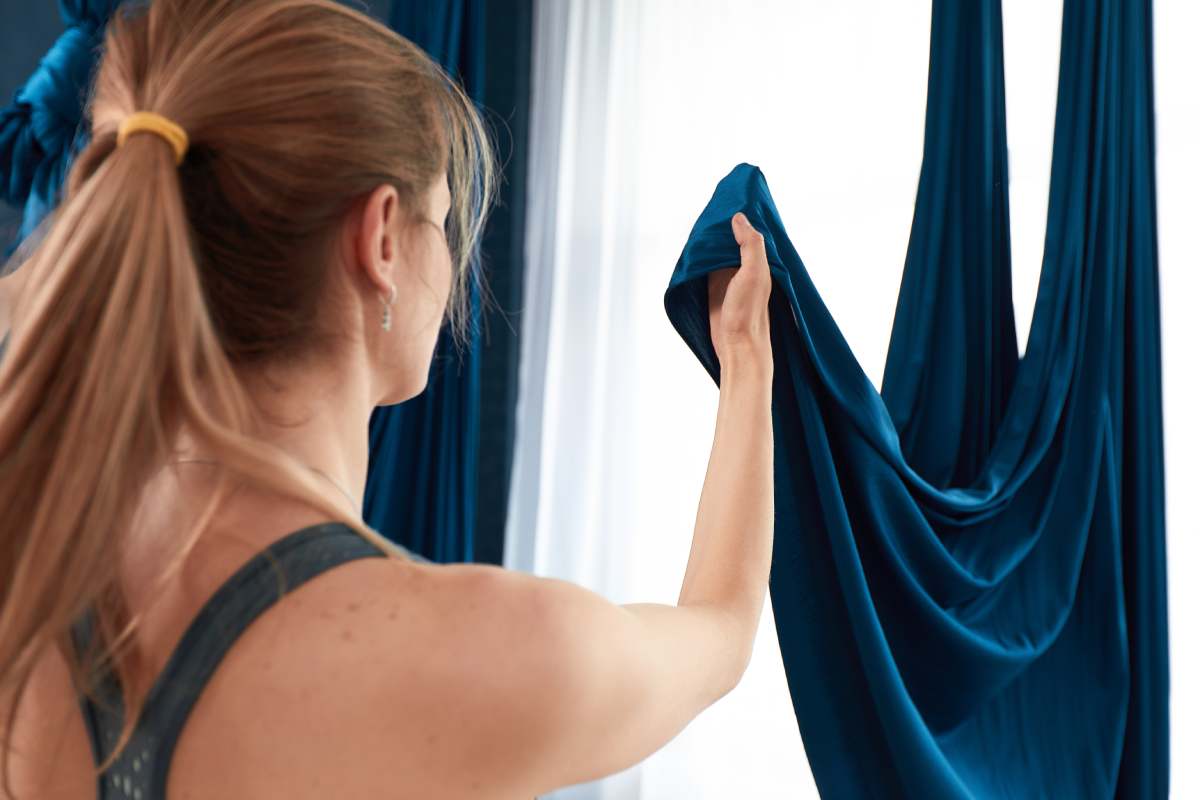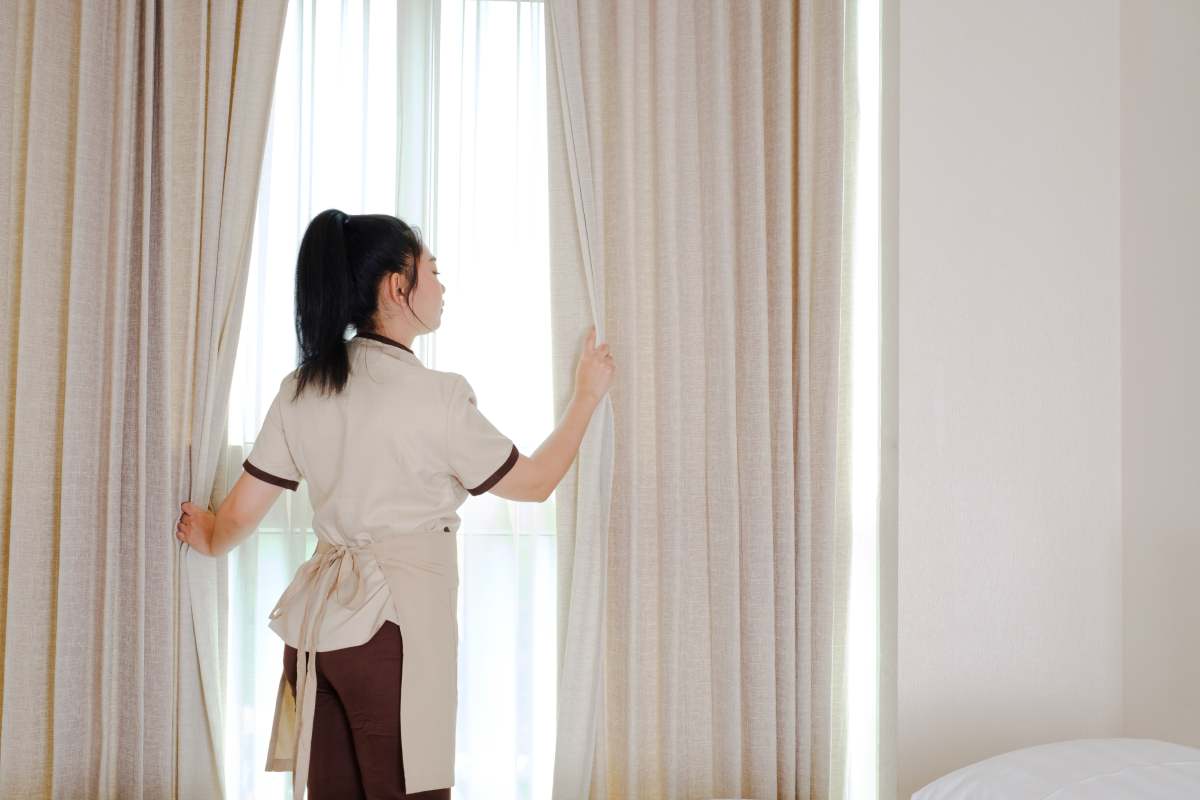Spring often brings a spike in issues like poor air quality, allergies, and the common cold. Despite your best efforts to vacuum, clean rugs, and dust, irritants can still linger in places you didn’t clean during the colder months.
With many people at home and feeling the urge to spring clean, homeowners are starting to tackle those tricky spots under sinks, in closets, and in the attic. If cleaning these hard-to-reach areas seems overwhelming, a simpler way to start your spring cleaning is by focusing on your drapes.
Fabric window treatments can trap dust, dander, and odours, but cleaning them is straightforward if you do it right.
Here’s a simple guide to cleaning your curtains and drapes to reduce allergens, combat irritants, and improve your home’s air quality:
Three Steps to Clean Curtains & Drapes:
- Prepare your cleaning supplies.
- Clean curtains while they’re still hanging.
- Refresh the drapes in the washing machine.
You might also read:
- What is the difference between office interior design, office renovations and office fit-outs?
- 6 Easy Exterior Designs to Boost Your Home’s Value
- Why Are Plantation Shutters So Expensive? How Long Do They Last? Are They Worth the Cost?
How to Prepare to Clean Drapes at Home
Cleaning drapes and curtains can seem confusing with all the different methods out there. The right cleaning method depends on the fabric type. Here’s a simple guide to help you clean your drapes effectively:
1. Identify Your Fabric
- Wool, Cashmere, Lined, or Pleated Drapes: These fabrics are best dry-cleaned. Look for a reliable dry cleaner in your area who specializes in handling delicate fabrics.
- Cotton, Synthetic Fabrics, Silk, or Sheer Drapes: These can generally be washed by hand or in a washing machine. Use warm to lukewarm water and a gentle detergent suitable for delicate fabrics.
2. Preparation
Before washing, it’s crucial to test the fabric to prevent any potential damage.
- Test for Colourfastness:
- Prepare a small bowl with warm water and a little detergent.
- Soak a small, inconspicuous corner of your drape in this solution.
- Observe the water:
- If the water changes colour: This means the fabric is not colourfast and may bleed. Avoid using the washing machine for these drapes; dry cleaning is safer.
- If the water remains clear: The fabric is colourfast and should be safe for machine washing.

3. Washing Instructions
- Hand Washing:
- Fill a basin or bathtub with warm to lukewarm water.
- Add a small amount of gentle detergent.
- Gently agitate the water and then immerse the drapes.
- Gently agitate and swish the drapes around in the water.
- Rinse thoroughly with cool water until no detergent remains.
- Machine Washing:
- Place drapes in the washing machine, preferably in a mesh laundry bag to protect them.
- Use a gentle cycle with warm to lukewarm water.
- Use a mild detergent.
- Avoid overloading the machine to prevent wrinkling and damage.
4. Drying
- For Hand-Washed Drapes: Gently squeeze out excess water (do not wring). Lay the drapes flat on a clean, dry towel to air-dry. Avoid direct sunlight, as it may cause fading.
- For Machine-Washed Drapes: After the wash, tumble dry on a low setting or air-dry as appropriate for the fabric. Check the care label for specific drying instructions.
5. Ironing
- Iron the drapes while they are still slightly damp for best results. Use the appropriate heat setting based on the fabric type. For delicate fabrics like silk, use a pressing cloth between the iron and the fabric to prevent damage.
By following these steps, you can effectively clean your drapes without causing any harm to the fabric. Always refer to the care label for any specific instructions related to your drapes. Proper cleaning and care will help keep your drapes looking fresh and beautiful.
How to Clean Curtains While Hanging
If you can’t wash your curtains or drapes in a machine or don’t have one available, you can still clean them while they’re hanging. Here’s a straightforward guide to keeping your curtains fresh and dust-free:
Supplies You’ll Need:
- A broom with soft, synthetic bristles
- A vacuum cleaner with a suitable attachment
- An odour-eliminating spray
Steps to Clean Hanging Curtains:
- Regular Dusting and Vacuuming:
- Vacuuming: Aim to vacuum your curtains every two weeks. Use the upholstery attachment on your vacuum cleaner to gently remove dust and dander. Run the vacuum over the fabric from top to bottom, ensuring you reach all areas.
- Dusting: Use a broom with soft, synthetic bristles to brush off any loose dust. Lightly sweep the broom over the fabric to dislodge dust and debris. Be gentle to avoid damaging the material.
- Odor Control:
- Odor-Eliminating Spray: To handle any lingering smells, like mildew, use an odour-eliminating spray. Before applying, test the spray on a small, hidden area of the curtain to ensure it doesn’t cause any spotting or discolouration.
- Application: Once you’ve confirmed there’s no adverse reaction, lightly mist the entire surface of the curtain. Allow it to air-dry completely.
- Additional Freshness:
- Odor-Absorbing Packs: Place odor-absorbing packs in the room to help control and reduce unpleasant smells. These packs can be discreetly placed in corners or behind furniture.
- Candles: Use odor-absorbing candles to enhance air quality and add a pleasant scent to the room. Make sure to follow safety guidelines for candle use and never leave them unattended.
By following these steps, you can keep your curtains looking and smelling fresh without needing to take them down. Regular maintenance with dusting, vacuuming, and odour control will help prolong the life of your curtains and keep your living space comfortable.
How to Clean and Freshen Drapes in the Washing Machine
If you have a washing machine and the fabric of your curtains or drapes is machine-safe, you can wash them at home. Here’s a simple guide to help you do it effectively:
Washing Your Curtains:
- Check the Fabric:
- Before you start, make sure your curtains are machine-washable. Check the care label for any specific instructions.
- Prepare the Machine:
- Set your washing machine to a gentle cycle. Use cool to warm water and add a mild detergent. This will help clean the curtains without damaging them.
- Load the Machine:
- Avoid overloading the machine. Wash one set of drapes at a time if they are long, or make sure not to crowd the machine if they are shorter. Overloading can lead to uneven cleaning and wrinkling.
- Add Freshness:
- To help remove odours and freshen the fabric, add a mild odour-eliminating laundry booster to the wash. This step will neutralize any unwanted smells and leave your curtains smelling fresh.
Drying Your Curtains:
- Air Drying:
- After washing, hang your curtains to air dry. This is the gentlest way to dry them and helps prevent shrinking and damage.
- Coordinate Washing and Drying:
- If you’re washing multiple sets of curtains, manage the washing and drying cycles to avoid having a pile of wet curtains. Check the moisture level of the drapes as they dry. Start the next load when the previous set is nearly dry to keep things organized and reduce wrinkles.
Final Touch:
- Rehang the Curtains:
- Once the curtains are completely dry, rehang them on their rods. This will help them regain their shape and reduce wrinkles.
- Freshen Up:
- Use an odour-eliminating spray to address any lingering smells. Choose a product with natural ingredients and a neutral scent. Hold the spray bottle about 30 cm from the curtains and spray evenly from top to bottom. This will keep your drapes smelling fresh and improve the air quality in your room.
By following these steps, you’ll have clean, fresh curtains that contribute to a pleasant and tidy living space. This method is a great way to get your spring cleaning off to a good start.









